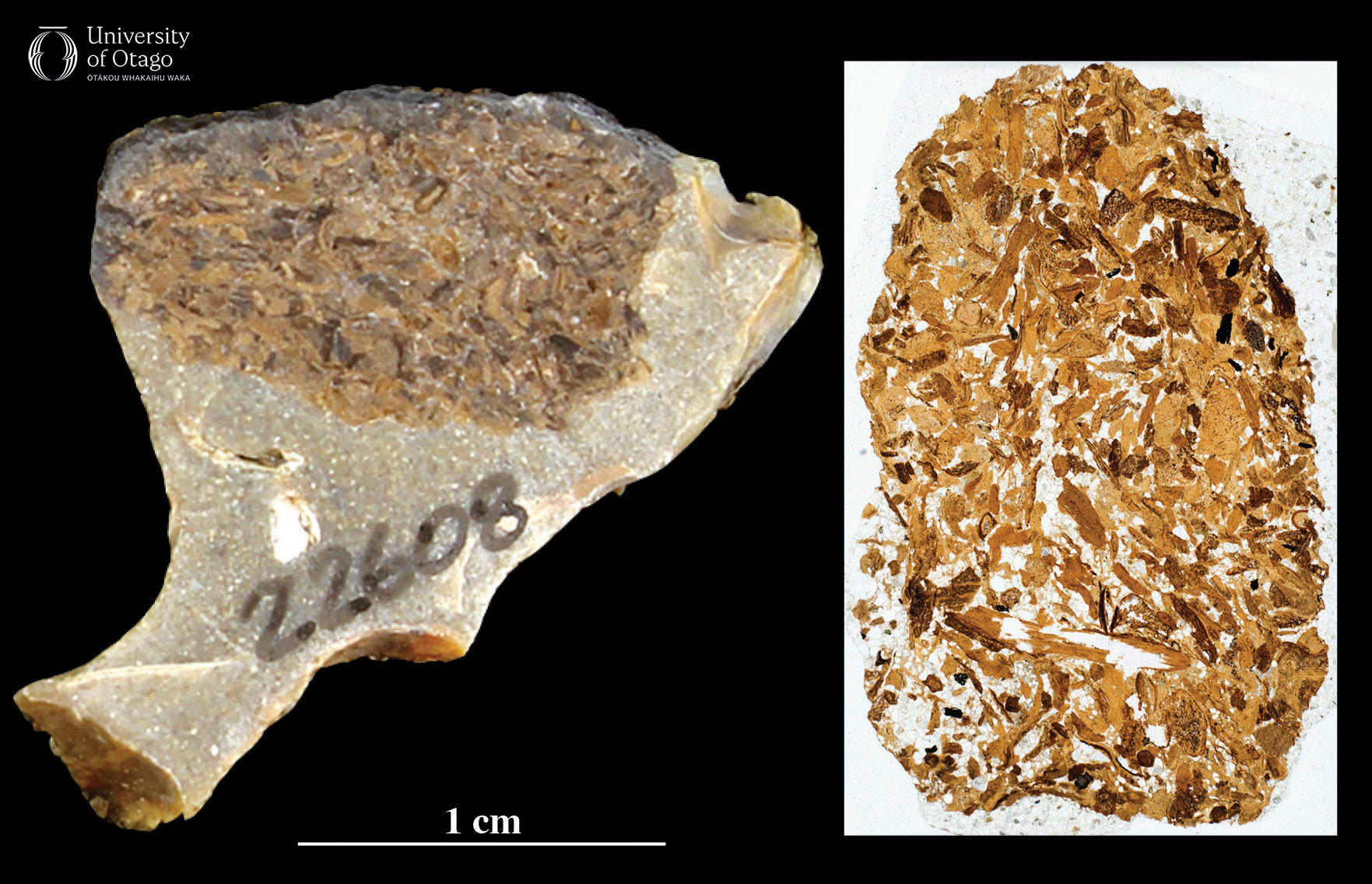27 Dinosaur droppings? A bezoar?
In 2004 a small pebble was collected by one of Ewan Fordyce’s students as part of an undergraduate research project. The pebble was found in a sediment horizon in the Waipara Valley in North Canterbury that is densely packed with shells from the Late Cretaceous gastropod Conchothyra parasitica. The pebble stood out to the student as a smooth, rounded and brown pebble amongst the mollusc fossils.

The left image shows the coprolite after it was cut through the centre to make a thin section. The right image is rotated 90° clockwise compared with the left image and shows the thin section of the coprolite. Image credits: RE Fordyce, DB Thomas. |
The pebble was brought back to the Department of Geology and prepared as a thin section, allowing the internal structure of the pebble to be studied with a microscope. Under the microscope the pebble was revealed to be a mixture of different types of plant fragments all cemented together. These plant fragments may represent the diet of an ancient animal, making the pebble a coprolite. And given that the fragments are from terrestrial plants, and that the coprolite was found in a Late Cretaceous sediment, the small brown pebble may be Aotearoa New Zealand’s first discovery of fossilised dinosaur droppings. Another word that could be used to describe this pebble is ‘bezoar’, a term used for undigested plant material trapped in the digestive system.
The small pebble has yet to be fully analysed and described and so it remains one of the many tantalising potential research projects within the Geology Museum collections.
—Written by Daniel B Thomas
| Specimen number: OU 22608 | Age: Approximately 75 million years old (Late Cretaceous, Haumurian stage) |
| Locality: Waipara Valley, North Canterbury | Rock Formation: Charteris Bay Formation |
| Collected by: DB Thomas | |
| Citation: Not yet described | |
A layer of sedimentary rock with distinct characteristics.
North of Christchurch in the Canterbury district of New Zealand. Notable for the scenic Waipara Valley which has produced internationally-important vertebrate fossils.
100.5 to 66 million years ago. The final epoch of the Cretaceous Period.
Evidence of life from a past geological age. Remains like bones, shells or wood, or an impression like a footprint, or some other evidence of life, from something that was alive more than 11,700 years ago.
A common method of preparing a very thin slice of a rock or fossil for examination under a microscope.
Fossilised faeces.

